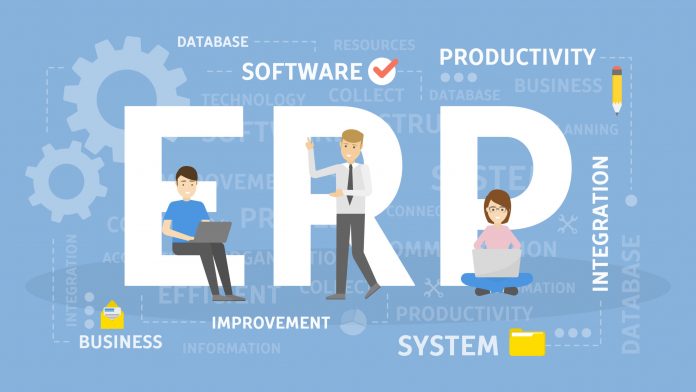Technology Trends for the near future point to increasingly complete digital services and, in general, to consolidate an intelligent operation based on data, analysis, and systematic optimization.
This concept refers to how artificial intelligence is presented in technologies that we know and in other completely new ones, allowing connecting people, companies, devices, content, and services.

Undoubtedly, SMEs must be an active part of this advanced phase of digital transformation in the USA to remain competitive, although it is not enough to adopt information technologies. It is also necessary that there is a profound change in the entire structure of an organization and its business culture.
In light of this, cloud engineers from Erbis created a list of technological trends according to the different key areas. We will include practices and solutions that are already being applied in a significant way. This trend will become even stronger in the coming months, and new tools are just emerging and taking shape.
Administration and operation
- ERP
Source: webopedia.com
A business management system can cover all – or most – of a company’s processes, from human resources to finance.
Initially, it was a tool mainly used by large companies, but the truth is that its use has been democratized, and more and more SMEs are using it.
The need to migrate to an intelligent and interconnected management model shows that ERP will continue to expand and consolidate as a corporate technology trend.
- Cloud technology
Source: doublestarsolutions.sg
According to Forrester, 60% of companies in the U.S. in 2018 were already relying on public cloud platforms -five times more than in 2013- and, of course, this technology is expected to continue to grow substantially.
A clear example of the above is the SaaS model, which works on a subscription basis without downloading or storing a sure solution on a computer.
Cloud technology is a fundamental tool for teleworking. It is increasingly practiced and better appreciated: through accounting software, ERP systems, and any other solution that works with the cloud, managers, and supervisors can follow the operations and movements of their companies remotely from different locations and devices.
In addition, employees – dispersed in their respective homes – have the possibility of visualizing the same information, facilitating the development of their corresponding functions.
- Automation
Source: syndacast.com
Automation makes it possible to leave repetitive or event-driven tasks in the hands of machines or software.
In the case of SMEs, automation is of great help to streamline their processes and ensure that their employees – who usually have to handle several functions at once- can focus on the practices that effectively require their potential or skills.
- Augmented data analytics
Source: idgesg.net
With the enormous amount of data generated every day, it is becoming increasingly difficult to explore it to conclude.
In response, augmented analytics uses automated algorithms to obtain more accurate hypotheses that help in decision-making.
- Voice-command digital assistants
Source: cloudfront.net
A select group of companies, including Apple and Google, have already consolidated digital assistants as one of their main value-added products.
Now it is the turn of smaller organizations, which can take advantage of this artificial intelligence technology to optimize the customer experience and provide better service.
Through an assistant, users can make voice searches of topics in a blog, request more information about a particular product or service, and make other queries in an agile and practical way.
- Electronic invoicing
Source: geciclaw.com
This type of solution can be classified both in the sales and accounting categories.
On this occasion, we have included them in the sales area to highlight the operational practicality they provide and their importance for user satisfaction.
Beyond being a requirement of the tax environment of many States, this invoicing methodology speeds up the sales process. It allows for an automated record of the same, generating more excellent reliability and improving the customer experience.
- Chatbots
medium.com
Have you talked to any brand through an online chat lately? If the answer is yes, then the chances are that you have been attended by software capable of following a conversation and answering questions: with the integration of artificial intelligence, chatbots are becoming more and more “human,” learning from previous discussions, understanding the true meaning of the questions and being able to anticipate users’ needs.
Accounting and finance
- Accounting software
Source: scoopempire.com
Software of this type allows SMEs to streamline their accounting functions, having full knowledge of their financial situation: the best systems work with cloud technology, enabling remote tracking of movements.
On the other hand, the most robust accounting platforms offer the integration of its modules, for example, electronic invoicing and remunerations, promoting complete, digitized, and efficient work.
- Blockchain
Source: paymentsjournal.com
Blockchain technology – or blockchain – became famous thanks to Bitcoin and cryptocurrencies: since its system of cryptographically signed nodes makes it highly secure, it is ideal for financial operations in the corporate environment.
Moreover, its applications have ranged from developing intelligent contracts to creating global registries for specific industries.
Human Resources
- People management software
Source: sight.com
This solution integrates and centralizes all the information about each employee and allows to obtain general performance indicators of work teams that help companies to optimize decision-making in terms of job rotation, contract extension, and payroll budget adjustment, among other things.
- Intelligent networks for prospect search
Source: b-cdn.ne
Machine learning and artificial intelligence tools that analyze large volumes of information in the web and digital world to identify the best job prospects according to the particular needs of companies.
Security
- Background validation solutions
Source: kvausa.com
Due to the migration to an increasingly digital and automated operation, SMEs face the need to reinforce their security mechanisms -especially in the I.T. area- as large corporations and organizations already do.
One of the solutions to meet this requirement are background validation platforms and systems, also known as background checks: through these tools, companies can consult background information and data on suppliers, potential collaborators, and even potential customers to identify potential risks and assess the suitability of the business relationship.
- OCR and biometric technology
Source: mantratec.com
We are talking about optical character recognition (OCR) to validate the authenticity of identity documents and solutions that allow biometric testing of face, voice, and fingerprints.
This type of tool helps prevent the identity of users in commercial processes, such as online purchases or access to certain digital services, from being compromised.
SMEs’ stance on new technologies

Although many SMEs are aware that their competitiveness depends, to a large extent, on adopting new technologies and changing their internal structure to adapt to new service models, a Brother study revealed that 55% of them do not do so due to a lack of budget and another 47% due to lack of skills and training.
This lack of knowledge makes it impossible to take advantage of existing technologies. It generates resistance to incorporating new applications: in this sense, adequate training in ICT – information and communication technologies – for workers or the owner of an SME is the best way to break down this barrier.
Conclusion

You now know the technological trends that will mark small and medium-sized companies. Undoubtedly, these show that the line dividing the physical world from the digital world tends to disappear to provide consumers with a comprehensive and satisfactory experience and optimize the internal workings of a business, giving modernization a chance and bet on digital transformation!






















